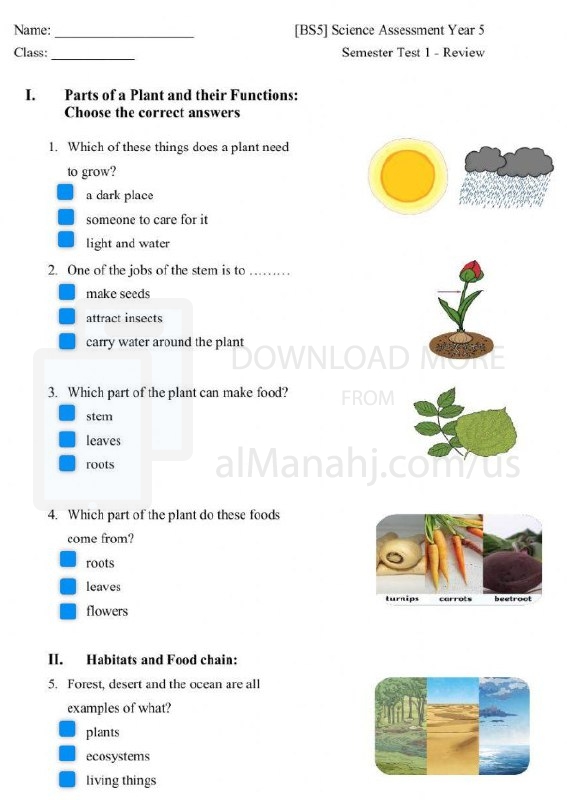File info: A Science Test about Parts of a Plant and Their Functions is an assessment designed to evaluate students' understanding of the different parts of a plant and their respective functions. This test aims to assess students' knowledge of plant anatomy, their ability to identify plant parts, and their comprehension of the roles played by each part in the overall functioning of a plant. Here's a description of what a Science Test about Parts of a Plant and Their Functions might include:
1. Test Format: The description of the science test provides an overview of its format. It may indicate whether the test is multiple-choice, fill-in-the-blank, or a combination of different question types. The number of questions and the total duration of the test may also be mentioned.
2. Parts of a Plant: The test covers the major parts of a plant, including the root, stem, leaves, flowers, and fruits. Students are expected to demonstrate their knowledge of each part and its specific characteristics.
3. Identification: The test may include questions that require students to identify and label the different parts of a plant. This can be done through labeling diagrams or matching exercises where students match the correct part with its corresponding name.
4. Functions: The test assesses students' understanding of the functions performed by each part of a plant. Students are expected to explain the roles of the root in anchoring the plant and absorbing water and nutrients, the stem in providing support and transporting water and nutrients, the leaves in photosynthesis, the flowers in reproduction, and the fruits in seed dispersal.
5. Vocabulary and Terminology: The test may include vocabulary questions that assess students' knowledge of plant-related terms and definitions. This can include terms such as photosynthesis, pollination, germination, and transpiration.
6. Application of Knowledge: The test may include questions that require students to apply their knowledge of plant parts and their functions to real-life scenarios. For example, students may be presented with a situation and asked to explain how a specific plant part contributes to the plant's survival or growth in that particular context.
7. Critical Thinking: The test may include higher-order thinking questions that require students to analyze and evaluate information related to plant parts and their functions. This can involve comparing the functions of different plant parts, predicting the consequences of the absence or damage to a specific part, or explaining the interdependence of plant parts within a complex ecosystem.
8. Grading and Evaluation: The description may provide information on how the test will be graded and evaluated. It may include details about the scoring criteria, such as allocating points to each question or question type. The test results are typically used to assess students' overall understanding of plant anatomy and their ability to explain the functions of different plant parts.
The purpose of a Science Test about Parts of a Plant and Their Functions is to assess students' knowledge and understanding of plant anatomy and the roles played by different plant parts. The test helps evaluate how well students can identify and explain the functions of each part, and their ability to apply their knowledge to real-life scenarios. The results of the test provide valuable feedback on students' comprehension of plant biology and can inform further instruction in this subject area. Additionally, the test promotes critical thinking and scientific reasoning skills related to the study of plants and their functions. |
